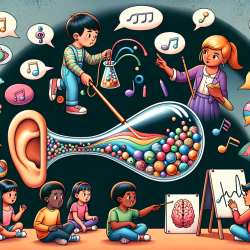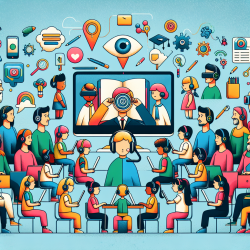Are you a practitioner looking to improve your clinical skills and provide better therapy to your clients? Look no further! The 2:1 Clinical Practicum model, which incorporates reciprocal peer coaching, clinical reasoning, and self-and peer-evaluation, is here to help you enhance your professional abilities.
This innovative approach involves a clinical educator supervising two students simultaneously, fostering a collaborative learning environment. Let's dive into how you can implement the outcomes of this research in your practice or encourage further exploration.
The 2:1 Supervision Model
The 2:1 supervision model allows for more active engagement and collaboration between students. Here are some benefits:
- Encourages student responsibility for learning
- Helps students explore alternative problem solutions in a safe environment
- Develops social interaction and communication skills
- Enhances student satisfaction with the learning experience
- Boosts self-esteem
Reciprocal Peer Coaching
Reciprocal peer coaching (RPC) is a key element of this model, where students coach each other during clinical activities. This method promotes equality and mutuality between learners, enhancing their clinical reasoning skills through activities like:
- Learning through demonstration
- Observing one another
- Performing clinical activities together
- Providing consultative assistance
- Engaging in problem-solving discussions
Developing Clinical Reasoning Skills
Clinical reasoning is crucial for professional autonomy and involves:
- Theoretical knowledge
- Cognitive skills like analysis, synthesis, and evaluation
- Meta-cognition, or awareness of one's own thinking
Incorporating RPC with clinical reasoning helps students develop critical thinking, higher-level thinking skills, and a team approach to problem-solving.
Self-and Peer-Evaluation
Feedback and evaluation are essential in the learning process. The 2:1 model emphasizes formative evaluation (feedback) and summative evaluation (formal assessment). Encouraging self-and peer-critiquing helps students build insight into their clinical skills and identify areas for improvement.
Practical Implementation
Here are some tips for implementing the 2:1 model in your practice:
- Set clear objectives and expectations with your students
- Encourage collaborative learning and shared responsibility for cases
- Incorporate regular feedback sessions focusing on self-and peer-evaluation
- Facilitate discussions that promote clinical reasoning and problem-solving
By adopting the 2:1 Clinical Practicum model, you can create a more dynamic and effective learning environment, ultimately leading to better outcomes for your clients.
To read the original research paper, please follow this link: A 2:1 Clinical Practicum, Incorporating Reciprocal Peer Coaching, Clinical Reasoning, and Self-and Peer-Evaluation










